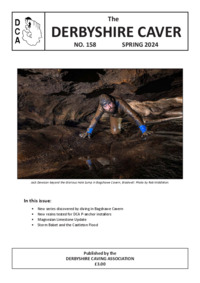axbridgecaver
Member
Hi Andymorgan
I think that the problem with using radio waves is that they travel at the speed of light and so picking up the different times for travelling through rock as opposed to air would be difficult. A friend of mine is going to contact someone who is currently at the Camborne School of Mining as ask him for advise. I don't think that the land owner where we are digging would permit drilling rigs. The camera idea appeals to me however is difficult to estimate the size of passages from a camera – but we have just lost the air space we were following.
I think that the problem with using radio waves is that they travel at the speed of light and so picking up the different times for travelling through rock as opposed to air would be difficult. A friend of mine is going to contact someone who is currently at the Camborne School of Mining as ask him for advise. I don't think that the land owner where we are digging would permit drilling rigs. The camera idea appeals to me however is difficult to estimate the size of passages from a camera – but we have just lost the air space we were following.



